 |
SRGC Bulb Log Diary |
| Home Recommend This Site To A Friend |
|
BULB LOG --- 16th January 2008 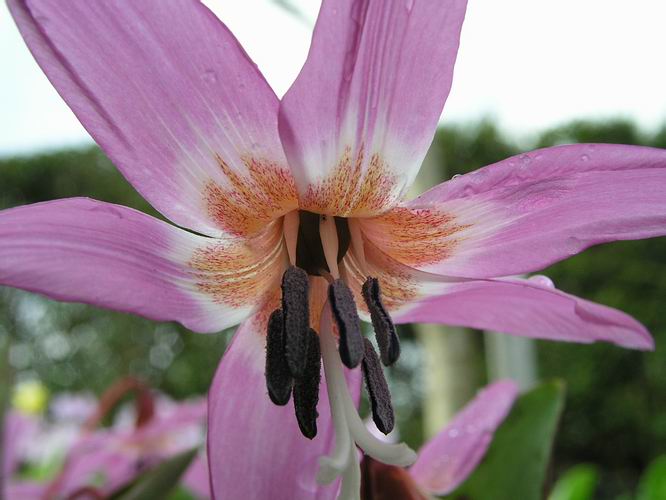 Dens canis flower Erythronium dens canis has a wide distribution from the UK all the way across Southern Europe to the Balkans. In our garden it forms good clumps of its showy pink flowers, starting to flower in March. 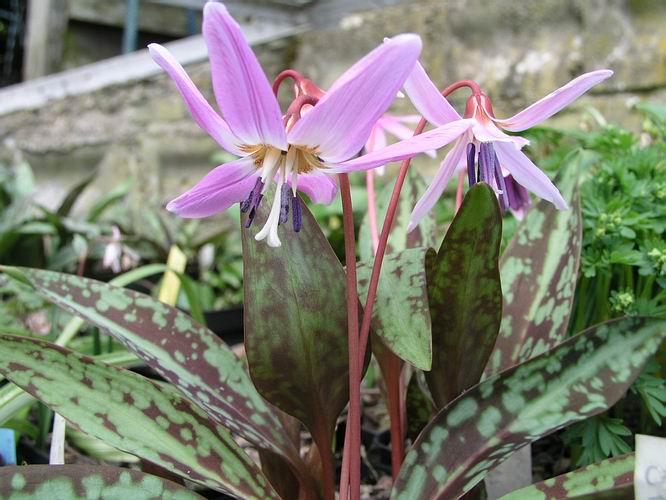 Dens canis flowers and leaves It is easy to tell Erythronium dens canis from all the American ones using the following features: the anthers are a dark violet colour and the spotting on the leaves forms a random pattern of spots and blotches which does not follow the veins of the leaves. 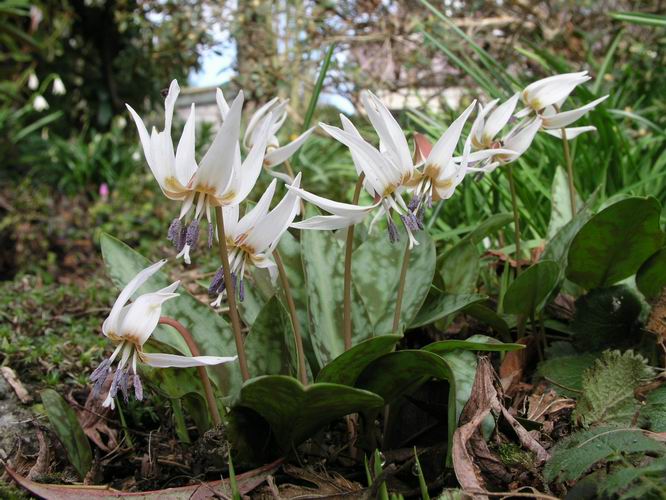 Dens canis white form There are some very good white forms of dens canis which also thrive in our garden. Some of these have been given names such as 'Snow Flake' and 'White Splendour' but as I am not sure the naming is always accurate I just call them a white form. 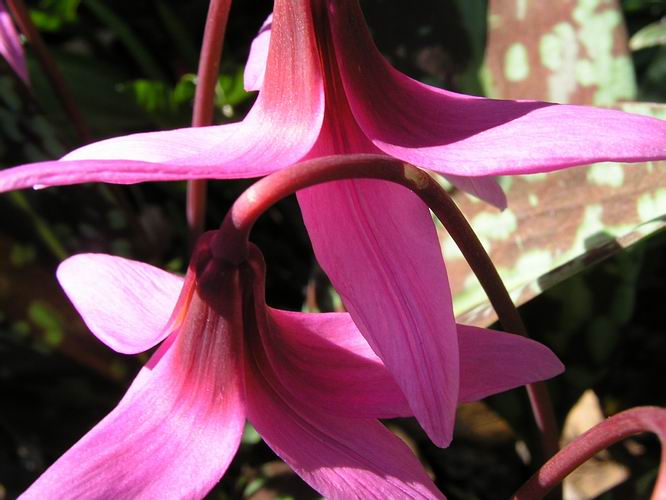 Dens canis dark flower Very dark pink flowered forms can also be selected. 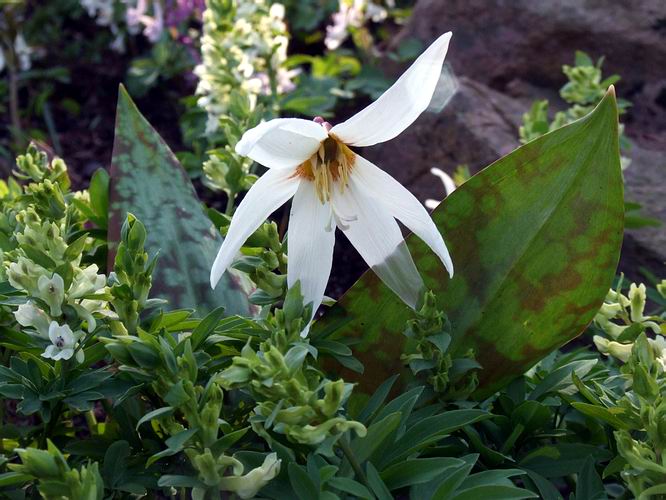 Erythronium caucasicum As we move further east to the Caucasus we find, Erythronium caucasicum.  Erythronium caucasicum clump It also has the random brown blotches on the leaves but the flowers are now creamy white with yellow anthers, this is another member of the dens canis complex. This beautiful plant is rarely offered and should be grabbed if ever you get a chance of bulbs or seed. 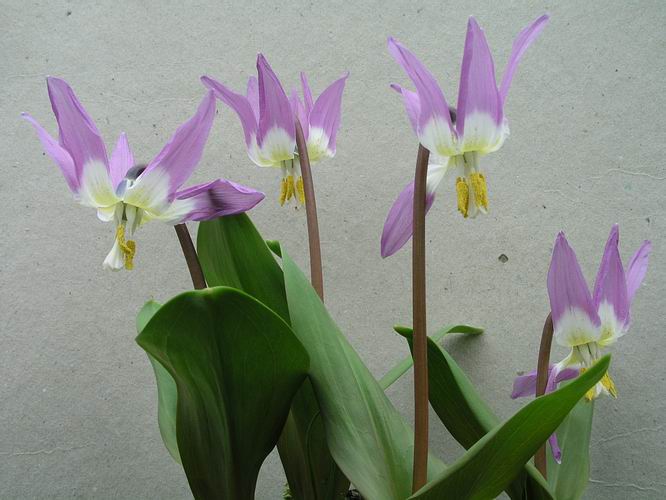 Erythronium sibericum group Further to the east and the north is found Erythronium sibericum: these have plain green leaves, purple coloured flowers with white and yellow zones towards the throat, the pollen is yellow . Coming from a very cold region it has a tendency, if the weather is mild, to open its flowers before they come through the ground so plant it in the coldest part of your garden. 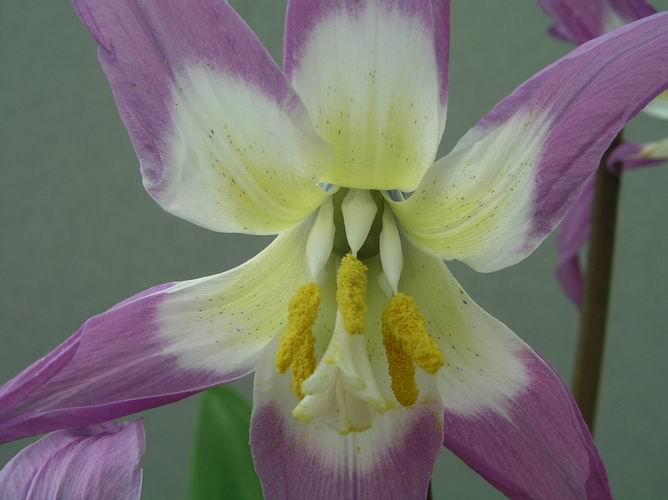 Sibericum flower A good variation within this colour theme can be found when you raise these plants from seed. 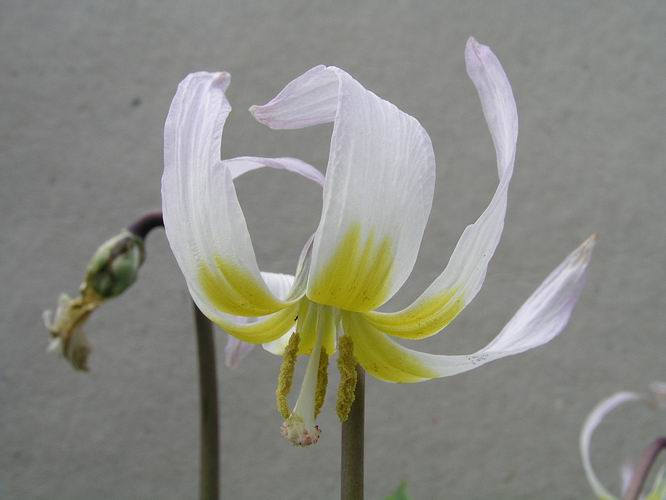 Erythronium sibericum white A number of white forms of Erythronium sibericum are also available like 'Altai Snow'. 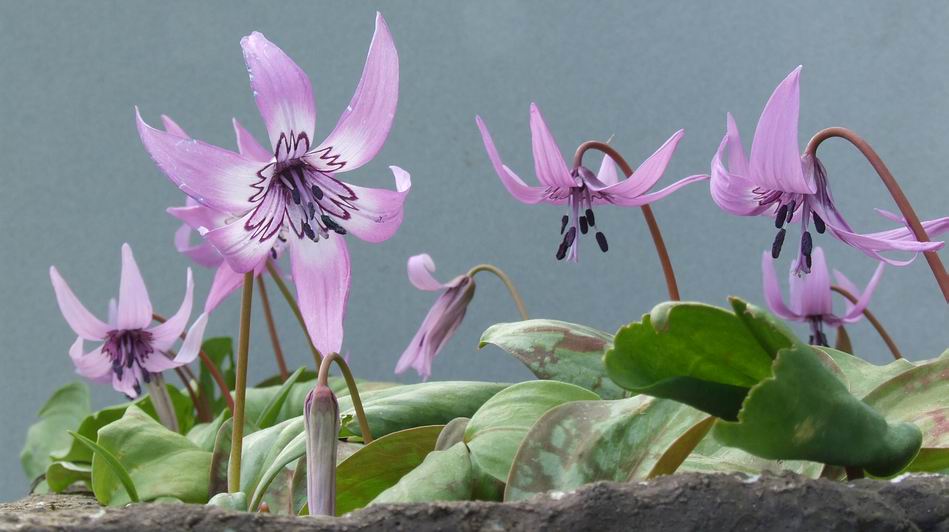 Erythronium japonicum The last member of the dens canis complex is the stunning Erythronium japonicum. It has plain to randomly brown blotched leaves and its large flowers can have very dramatic markings. 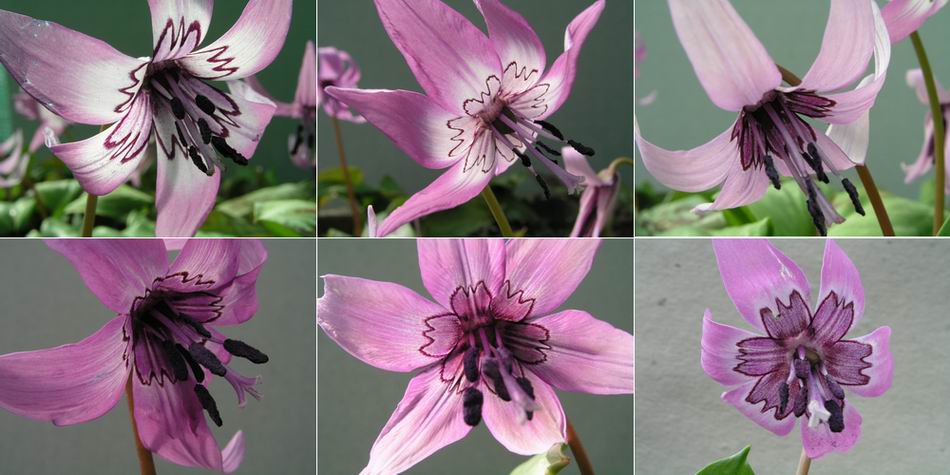 Erythronium japonicum montage In recent years large quantities of E. japonicum have been exported from China and these contain some of the most beautiful markings that you will find in any flower. These forms seem distinct, to me, from the other forms of japonicum we have grown and seem to combine the best features found in both sibericum and japonicum. There is mixed opinion as to whether Erythronium caucasicum, sibericum and japonicum are good (valid) species or should just be subspecies of dens canis; I like to think they are distinct enough to warrant specific status. EASTERN NORTH AMERICA Down the eastern side of North America is another group of erythroniums that I refer to as the americanum complex, or the eastern yellows. There are three principal taxa, E americanum, umbilicatum and rostratum, all very similar to each other. I have had them under all these names but I have to say that from the cultivated material I have grown, I find it impossible to distinguish them. In the wild they may be distinct and I have read some excellent papers describing the different species involved but there is a lot of confusion in the cultivated plants, perhaps hybrids between them are involved. Until I get plants that show clearly the diagnostic features applied to these species I just refer to them all as Erythronium americanum. 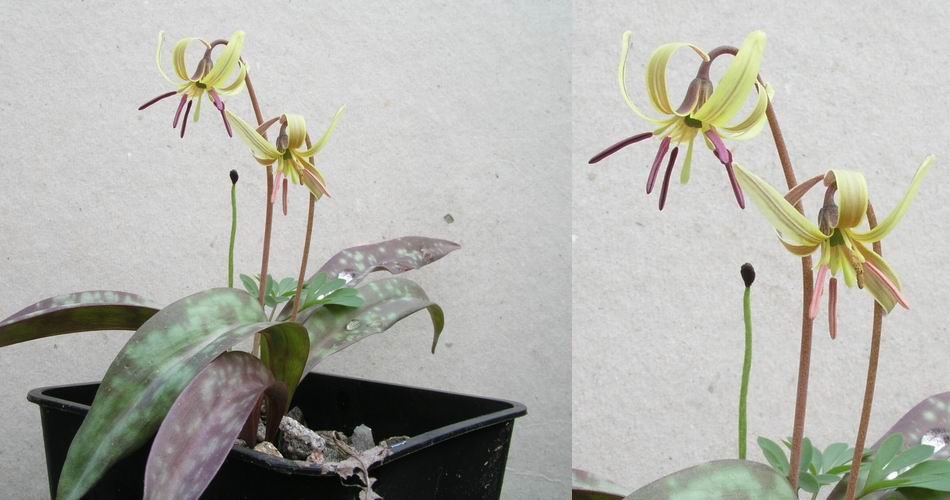 Erythronium americanum from wild seed The pattern on the leaves of Erythronium americanum is similar to that found on E. dens canis and is a series of random brown blotches and spots. In fact, these Eastern North American erythroniums are more closely related to the Eurasian ones than they are to those found in Western North America. 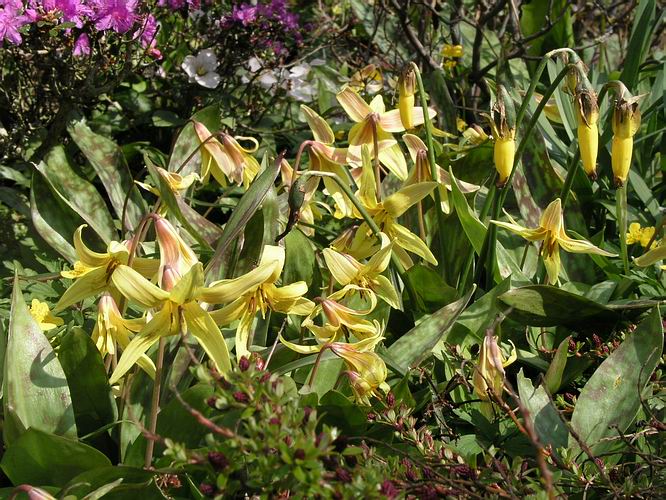 Erythronium americanum proliferating form There is a form, very common in cultivation, which spreads quickly by stolons and produces masses of single leaves but does not flower very well. However for the last three years our patch of this form has produced a reasonable number of flowers, suggesting that it will flower well if the conditions suit it. What those conditions are I have no idea.  Erythronium americanum 'Craigton Flower' I have raised Erythronium americanum form seed many times and have selected out forms that will flower every year. Having distributed the form above initially as 'the flowering form' we have now given it the name, 'Craigton Flower'. The anther colour of americanum can vary in colour and we have brown and yellow pollen forms from the same seed batch. 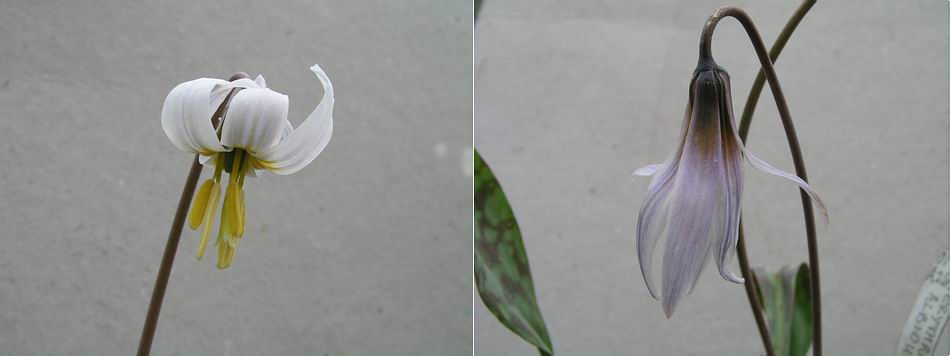 Erythronium albidum Erythronium albidum is like a white form of americanum, sometimes with a lovely dove grey back to the petals, it increases reasonably well vegetatively but not as quickly as some of the forms of americanum do. ^ back to the top ^ |